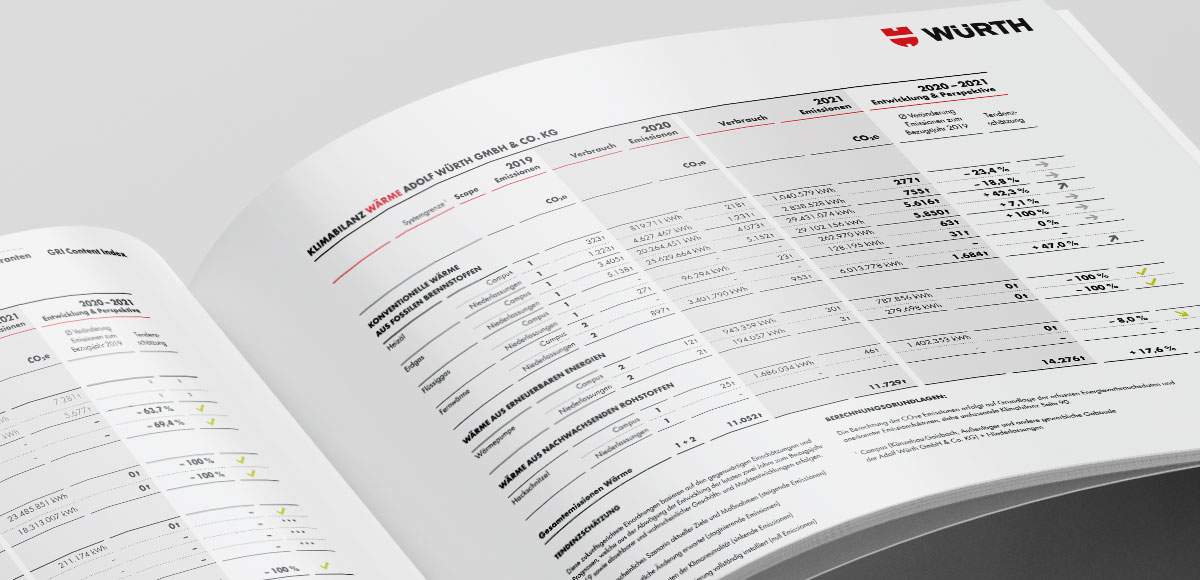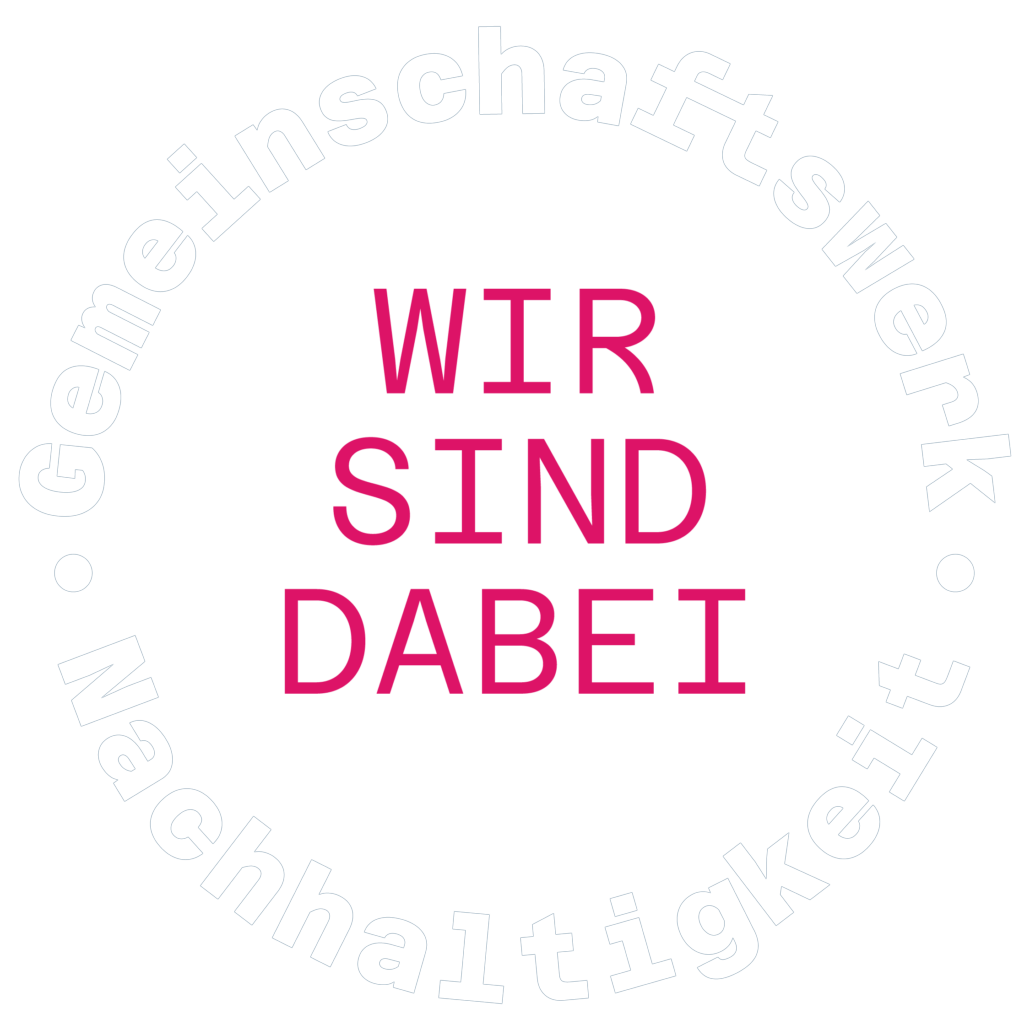CO2 accounting (CO2e) for companies, municipalities, products und buildings.
A company’s CO2e balance or corporate carbon footprint is not only an instrument for measuring greenhouse gas emissions in accordance with the GHG Protocol, but also the basis for a successful decarbonisation strategy.

As your service provider, we prepare the carbon footprint (CO2e) for your company, your municipality, your product or your building.
Control instrument for a substantial decarbonisation progress
Detailed accounting of CO2 equivalents enables companies and organisations to precisely identify their emission sources and quantify their CO2e footprint. This enables them to take targeted measures to reduce their emissions and achieve a low-carbon economy in the long term. A comprehensive decarbonisation strategy includes measures to reduce emissions in all areas, from the procurement of renewable energy to increasing efficiency in production and transport, as well as material-focused decarbonisation. A CO2e balance is therefore the basis for the development and implementation of measures that are necessary to reduce emissions and achieve the goal of decarbonisation.
Variants of CO2e accounting for companies and organisations
CO2 accounting is therefore both the basis and a monitoring tool for progress on the path to decarbonisation and should be prepared at regular intervals, for example annually. There are currently different requirements for CO2e accounting. The respective method for determining a carbon footprint is based on the specific requirements. In view of the CSRD reporting obligation and the assessment of Scope 3 in the supplier rating by EcoVadis, a strategic approach to data collection is required in order to avoid confusion and duplication of work.

RITTWEGER und TEAM offers the following procedures and service modules for CO2 balancing:
- Corporate Carbon Footprint (CCF) Scope 1 & 2
- Extended Corporate Carbon Footprint (CCF) Scope 1 & 2
- Corporate Carbon Footprint (CCF) Scope 3
- Defossilisation strategy
- Transformation strategy in reporting
- Product Carbon Footprint (PCF)
- Scope 3 Supply chain & product optimisation
Corporate Carbon Footprint (CCF): Determination of the CO₂e footprint in Scope 1 and Scope 2 based on real data from the organisaiton.
Our services:
- Development of a data collection structure for an organisation
- Analysis of the issuers to be recorded
- Development of individual query templates for the respective organisation
- Real-time measurement and monitoring of consumption data as required
- Benchmark for the respective market sectors
- Verification and confirmation of the determination by an external service provider (separation of creation and verification)
Areas of application for this method:
- Basic data for the determination of materiality (materiality analysis)
- Basic data for fulfilment of the CSRD guideline/sustainability reporting/taxonomy reports, ESG reports
- Reporting basis for subsidiaries in holding companies or corporate groups
- Basic data for transformation modelling and creation of transformation concepts
- Basic data for lifecycle assessment (LCA, life cycle assessment) based on real-time data
- Basic data for investment planning
- Basic data for future automated data transfer of CO2 data
- Basic data for ISO 14001
- Basic data for energy audit DIN 16247-1
- Basic data for EMAS
- Basic data for ISO 50001 and 50005
- Basic data for Cradle to Cradle Certified® certification
Advantages:
-
Creation of a database based on real data
-
Structural basis for visualising the progress of the transformation
-
Overall overview for management of consumption data for better control in crisis situations
Disadvantages:
Recording and reporting structures must be established if they do not yet exist in the company.
Extended corporate carbon (CO₂e) footprint: Determination of the CO₂e footprint in Scope 1 and Scope 2 on real data from the organisation, taking into account current standards and actual potentials
Our services such as Corporate Carbon Footprint (CCF) plus:
-
Inclusion of net negative emissions, e.g. due to higher share of own electricity than consumption as well as negative emissions due to carbon capture and storage (CCS), compensation services through certificates, e.g. from biochar, certificates from material flows.
-
Merging several verification partners
Areas of application for this method:
- Basic data for determining materiality (materiality analysis)
- Visualisation of strategies for negative emissions
- Basic data for Cradle to Cradle Certified® certification
Advantages:
- Data and reporting structures are developed for the entire transformation path from the outset
- Improved transparency and understanding of the status of the relevant issuers
Disadvantages:
- No direct verification possible (only via verification by the auditor)
- Absolute CO2 equivalents cannot be used for market communication
Corporate carbon footprint: determination of the CO₂e footprint in Scope 3
Our services:
- Analysing the relevant issuers in the supply chain
- Creation of a data structure to record the relevant issuers
- Recording the basic data
- Calculation on the basis of real data or databases
Areas of application for this method:
- Basic data for determining materiality (materiality analysis)
- Basic data for fulfilment of the CSRD guideline/sustainability reporting/taxonomy reports, ESG reports
- Component of an EcoVadis rating
- Reporting basis for subsidiaries in holding companies or groups of companies
- Basic data for transformation modelling and creation of transformation concepts
- Basic data for lifecycle assessment based on real-time data
- Basic data for investment planning
- Basic data for future automated data transfer of CO2e data
- Basic data for material-focused decarbonisation in Scope 3
- Basic data for Cradle to Cradle Certified® certification
- Verification by external service provider possible with complete data (separation of creation and verification)
Advantages:
- Creation of an overview of the most relevant emitters in the supply chain or in the entire corporate context
- Basis for the development of a CO2e neutral supply chain
- Structural basis for visualising the progress of the transformation
- Overall management overview of consumption data for better control, foresight for material price increases through higher CO2e pricing.
Disadvantages:
- Recording and reporting structures must be set up if these do not yet exist in the company.
- The use of database-based data for calculation does not show the transformation progress of suppliers.
Modelling a defossilisation strategy (fossil decarbonisation) for the key areas of electricity, heat, mobility, packaging and products up to 2045
Our services:
- Definition of the relevant categories and evaluation of the data from Scope 1, 2 or 3
- Analysis of the respective focal points
- Underpinning the transformation paths of electricity, heat and mobility with state-of-the-art technologies, methods and processes
- Underpinning the transformation paths of products and packaging with non-fossil materials, raw materials and material cycles according to the state of the technology
- Underpinning the transformation paths of electricity, heat and mobility with experimental technologies, methods and processes that are expected to be ready for the market in the next 10 years (new storage technologies)
- Underpinning the transformation pathways for products and packaging with experimental material and raw material concepts (plastic from biochar or CO2 as well as return flows from resulting material cycles)
- Visualisation and documentation of modelling
Areas of application for this method:
- Creation of a common understanding in management or in the company as a whole about the areas of responsibility, solution approaches and time frames for the transformation up to 2045
- Basis for an internal strategy paper
- Substantiation of the process for determining materiality (materiality analysis)
- Preliminary stage for a transformation strategy to be published
- Part of a Cradle to Cradle Certified® certification
Advantages:
- Creation of innovation spaces for product development
- Basis for integrating the circular economy into the corporate strategy
- Optimisation of internal resources and processes for the transformation
- Recognising market niches and competitive advantages within the transformation
- Training a vision within the corporate culture
- Integration and balancing of second and third life cycles from the circular economy in long-term modelling
Disadvantage:
Requires a high level of understanding of the transformation.
Public (reporting) fossil transformation strategy for decarbonisation in the priority areas of electricity, heat, mobility, packaging and products
Our services:
- Definition of the relevant categories and evaluation of the data from Scope 1, 2 or 3
- Consideration of materiality (materiality analysis)
- Analysis of the respective focal points, comparison with market and competitive requirements, as well as requirements of banks, investors and other stakeholder groups
- Measurement – data collection and monitoring of the largest individual emitters in Scope 1 and 2
- Inventory of building data and identification of potential areas, e.g. for photovoltaics
- Underpinning the transformation paths of electricity, heat and mobility with state-of-the-art technologies, methods and processes
- Underpinning the transformation paths of products and packaging with non-fossil materials, raw materials and material cycles according to the state of the technology
- Alignment of the transformation path with the 1.5 degree target
- Determination of transformation costs and preparation of an investment forecast
- Visualisation and documentation of the modelling
- Development of the communication statements for brand communication
- Verification of the communication statements and verification of the transformation strategy by an external service provider (separation of creation and verification)
Areas of application for this method:
- Component of the materiality analysis
- Basis for credible and resilient stakeholder dialogues
- Reporting basis for subsidiaries in holding companies or groups of companies
- Development basis for the transformation progress within the sustainability reporting CSRD
- Basis for applying for funding or participating in funding projects
- Underlining the transformation opportunities for risk sectors within the taxonomy and in financing rounds
- Part of sustainability ratings for financing rounds
- Part of supplier ratings such as Ecovadis
- Part of a Cradle to Cradle Certified® certification
- Basis for communication measures on sustainability performance based on the Green Claim Directive (absolutely necessary in addition to an LCA for products or when using compensation models)
Advantages:
- Creating a common understanding throughout the company of the areas of responsibility, solutions and timeframes for the transformation up to 2045
- Basis for external communication on the sustainability performance of products
- Optimisation of internal resources and processes for the transformation
- Recognising market niches and competitive advantages within the transformation
- Training a vision within the corporate culture
- Visualisation of the company’s future viability
Disadvantage:
Requires a high level of understanding of the transformation.
Product Carbon Footprint (PCF) – classic, product-related lifecycle analysis for CO₂e footprint according to ISO 14067
Our services:
- Determination of the CO2e footprint in the life cycle per product
- Database- or real-time-based data acquisition
- Benchmark with comparable products
- Basis for calculation and integration of product innovation
- Benchmark of the product in different innovation cycles
- Auditing by an external service provider
- Certification by an environmental verifier or certification body
Areas of application for this method:
- Product information within the product declaration
- Data analysis for product innovations
- Fulfilment of requirements when applying for funding and funding projects
- Supply chain management
- Basic data for ISO 14001
- Basic data for BIM
- Part of a Cradle to Cradle Certified® certification
Advantages:
- Quick and easy balance sheet with informative value
- Standardised procedure
Disadvantages:
- Significance based on outdated database data
- Complex determination and integration of transformation progress (e.g. switch to 100% green electricity)
- High workload with a large number of items or a large number of products
- Prone to errors when updating
- High costs
- complex integration of innovations from the circular economy – system limit of the first life cycle – potential from the second and third life cycle cannot be integrated
Optimisation of Scope 3 within procurement and the supply chain, optimisation of product design
Our services:
- Setting priorities based on current technological possibilities
- Material-focused decarbonisation by identifying material alternatives
- Optimisation of the supply chain
- Integration of product innovations
- Visualisation of innovation approaches
Areas of application for this method:
- in case of high innovation pressure in the respective industry
- for general product innovation approaches
- to answer strategic questions
Advantages:
- Quick overview of the current situation
- Creation of non-technological solutions
- Creative impetus through different perspectives
Disadvantage:
For highly complex products, precise data on the starting materials/ingredients (BOM) must be available.


